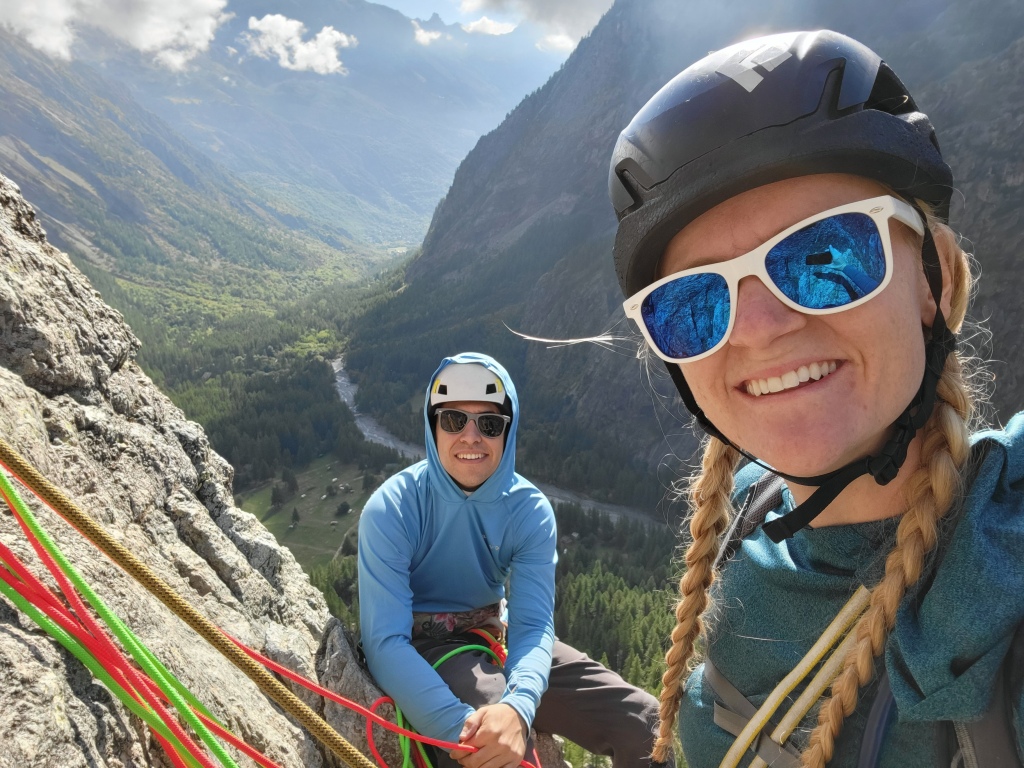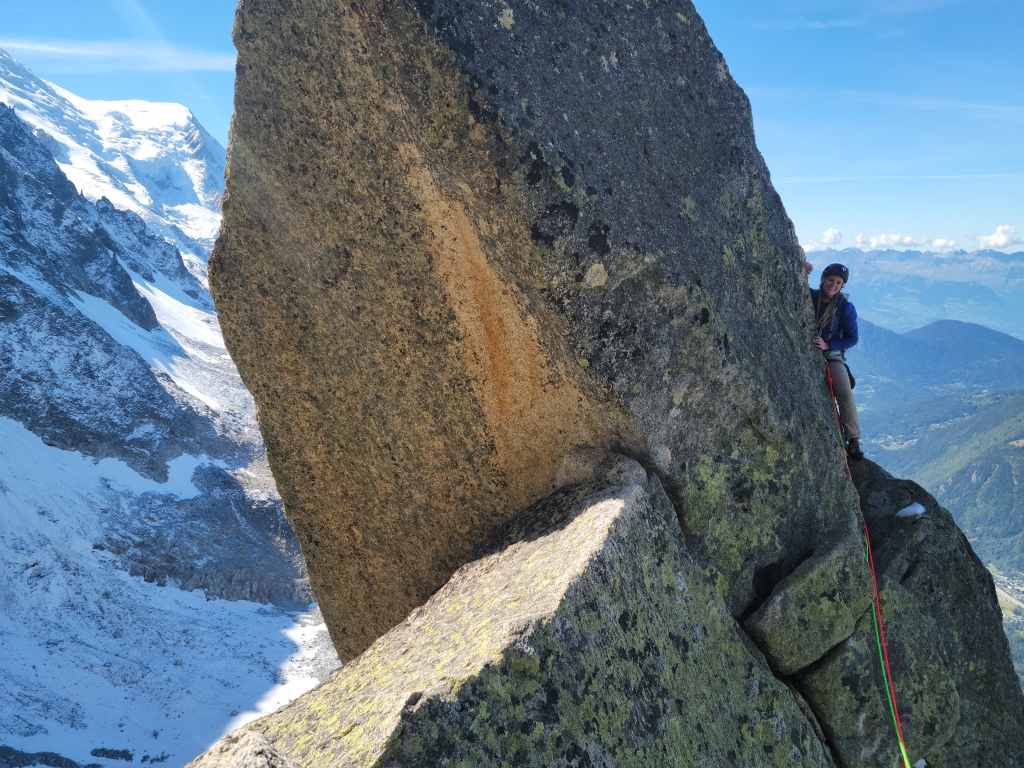As soon as we left Spain we went straight to the Alps. It was mid-September so we didn’t have a moment to waste as cold weather was fast approaching.
The drive from Southern Spain to Écrins National Park took only 2 days, with one overnight stay near Barcelona. On our way through Southern France we stopped at a climbing store to ask some locals about the area and to get climbing ropes (notice the plural). This aspect is quite unique for North American climbers because in the US most often only one thick rope is used, whereas in Europe routes on big mountains are set up for two thinner 50 (or 60) meter ropes.
When descending a route there are two ways to get down: rappelling or walking-off (some require a combination of the two). For my non-climbing friends, a walk-off means that you climb to the top of the route and you’re able to walk down, or sometimes scramble. This is our preferred option (if possible) for descending a route. Rappelling requires using your rope(s) to descend using a rappel device.
For mountains that are too steep or simply cannot be descended by walking, you must rappel. This is the case with many mountains in the Alps primarily due to rock type (limestone in Europe vs granite in the US). Granite has natural fissures and gullies that frequently allow for walk-offs; limestone tends to be steeper. By having two 50 meter ropes, you are able to descend a full 50 meters. If you had a single 70 meter rope, you would only be able to descend 35 meters because you double the rope as you rappel. Thus, by having two ropes you can descend further, which means you also descend faster.
Moving on. After getting our gear, we made our way to Écrins. We only stayed two nights so we could have one day to climb as the rain was coming soon. We did a gorgeous 8 pitch route.





We spent the rest of the day exploring the area where many hikers go for multiday trips to huts high up in the mountains. The glaciers are stunning and even though it was September, the waterfalls were still running.



Next we headed to Chamonix through the scenic route. We passed some alpine lakes and did a few mountain passes, traversing through Italy and France several times. It even started snowing (remember it was mid-September)!








Chamonix was a bit of an afterthought when we started our road trip. We had always planned on getting to the Swiss Alps as fast as possible to catch what remained of the climbing season. We decided to go to Chamonix because of a really enticing climbing guidebook and we are so glad we did!
The first few days were rainy (snowing in the mountains) and cold. We spent them exploring the town and familiarizing ourselves with the area. Chamonix is surrounded by mountains on all sides and is a heavenly destination for climbers, bikers, hikers, paragliders, skiers… and the list goes on. They make the mountains as accessible as possible by cable cars but most only run during the summer season so by the time we got there we were limited to just the main cable car running to Mont Blanc. Luckily for us, this car goes to one of the best routes in the area!



After waiting for the snow to melt, we dared to give this route a go. The day was chilly yet sunny. The route weaves from the North to the South side of the ridge so we were moving between sun and shade. It was ideal given it was a completely sunny day.









We completed the route without any hiccups and descended (by rappelling and walking-off) back towards the cable car. Unfortunately, we missed the last ride down by about an hour so we had to hike all the way down the mountain to Chamonix, adding another 2 hours to the day, but it was worth it. After about 12 hours of endless exertion we made it down the mountain… at which point I twisted my ankle on flat ground and it swelled up like a balloon. But that is neither here nor there haha.
To see a video of our time in the French Alps, see my latest YouTube video here.
From Chamonix we headed to Switzerland!